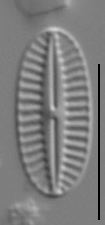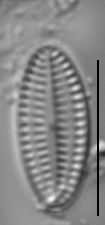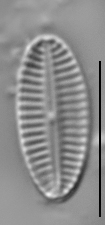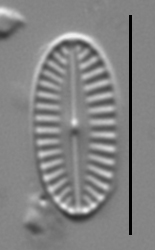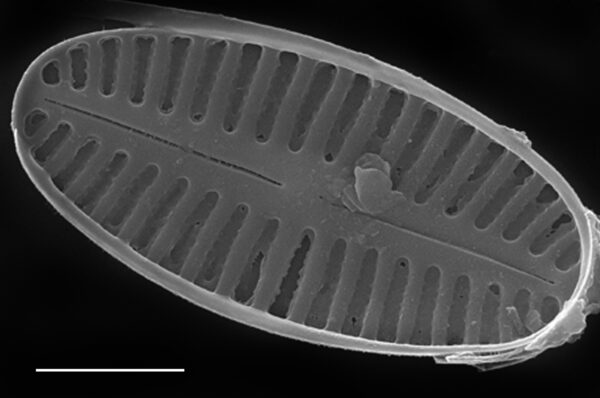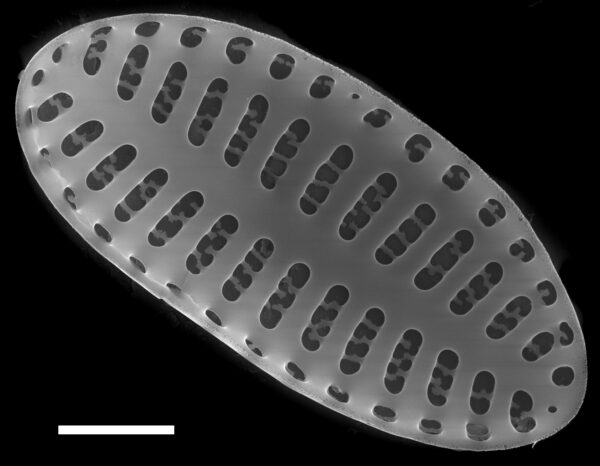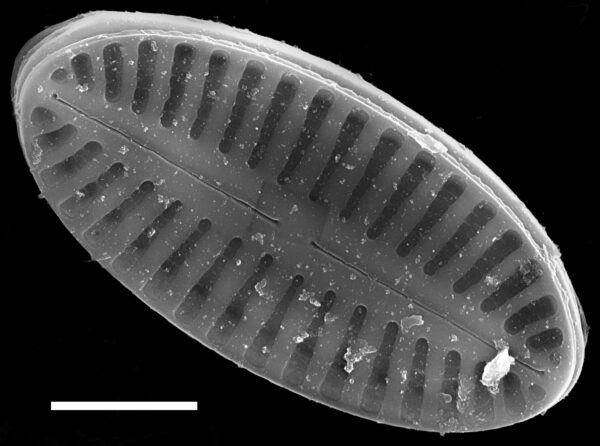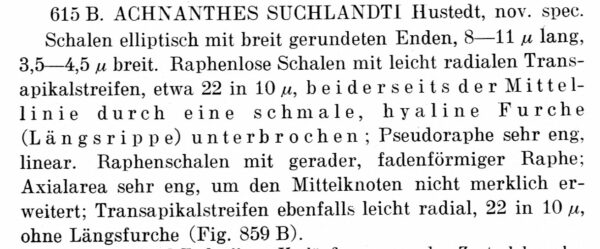Karayevia suchlandtii
-
Category
-
Length Range7-15 µm
-
Width Range3.6-5.3 µm
-
Striae in 10 µm18-20
-
ContributorMarina Potapova - May 2010
-
ReviewerRex Lowe - Feb 2011
Identification
Description
Valves are elliptical to linear-elliptical. The raphe valve has a lanceolate axial area and no distinct central area. The raphe is straight without terminal fissures. External proximal and distal raphe endings are slightly expanded. Striae in the middle of raphe valve are almost parallel, becoming radiate toward apices, 18-20 in 10 µm. The rapheless valve has a linear axial area and no central area. Striae on rapheless valve are interrupted by a longitudinal line at each side of the valve, they are slightly radiate or almost parallel in the valve center, becoming radiate toward apices, 18-20 in 10 µm. The vimines dividing areolae within striae on both raphe and rapheles valves are often incomplete, so that areolae are often partially fused. They are arranged in either uniseriate or biseriate striae, which are formed by offset double rows of areolae. The double rows are more often observed towards the valve margins.
Original Description
Schalen elliptisch mit breit gerundeten Enden, 8-11 µ lang, 3,5-4,5 breit. Raphenlose Schalen mit leicht radialen Transpicalstreifen, etwa 22 in 10 µ, beiderseits der Mittellinie durch eine schmale, hyaline Furche (Längsrippe) unterbrochen; Pseudoraphe sehr eng, linear. Raphenschen mit gerader, faden förmiger Raphe; Axialarea sehr eng, um den Mittelknoten nicht merklich erweitert; Transapikalstreifen ebenfalls leicht radial, 22 in 10 µ, ohne Längsfurche (Fig. 859B).
-
BasionymAchnanthes suchlandtii
-
AuthorHust. 1933
-
Length Range8-11 µm
-
Width3.5-4.5 µm
-
Striae in 10µm22 in the center of the raphe valve
Citations & Links
Cite This Page
Potapova, M. (2010). Karayevia suchlandtii. In Diatoms of North America. Retrieved July 26, 2024, from https://diatoms.org/species/karayevia_suchlandtii
Responses
The 15 response plots show an environmental variable (x axis) against the relative abundance (y axis) of Karayevia suchlandtii from all the stream reaches where it was present. Note that the relative abundance scale is the same on each plot. Explanation of each environmental variable and units are as follows:
ELEVATION = stream reach elevation (meters)
STRAHLER = distribution plot of the Strahler Stream Order
SLOPE = stream reach gradient (degrees)
W1_HALL = an index that is a measure of streamside (riparian) human activity that ranges from 0 - 10, with a value of 0 indicating of minimal disturbance to a value of 10 indicating severe disturbance.
PHSTVL = pH measured in a sealed syringe sample (pH units)
log_COND = log concentration of specific conductivity (µS/cm)
log_PTL = log concentration of total phosphorus (µg/L)
log_NO3 = log concentration of nitrate (µeq/L)
log_DOC = log concentration of dissolved organic carbon (mg/L)
log_SIO2 = log concentration of silicon (mg/L)
log_NA = log concentration of sodium (µeq/L)
log_HCO3 = log concentration of the bicarbonate ion (µeq/L)
EMBED = percent of the stream substrate that is embedded by sand and fine sediment
log_TURBIDITY = log of turbidity, a measure of cloudiness of water, in nephelometric turbidity units (NTU).
DISTOT = an index of total human disturbance in the watershed that ranges from 1 - 100, with a value of 0 indicating of minimal disturbance to a value of 100 indicating severe disturbance.
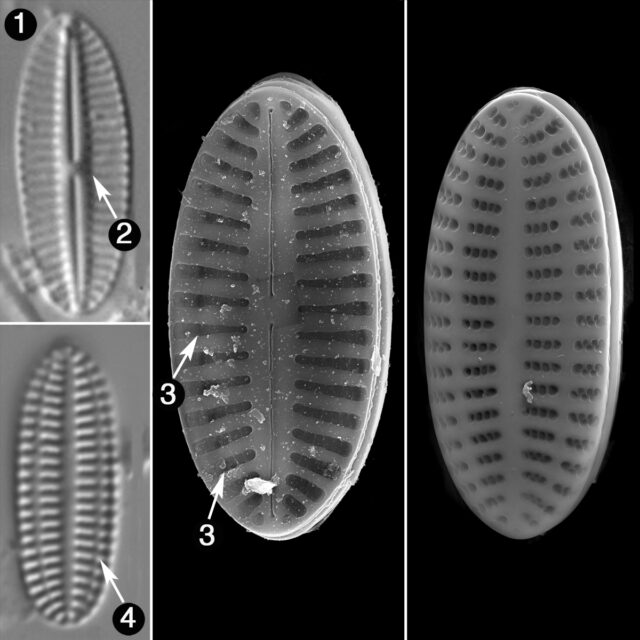
Karayevia suchlandtii
- Valves elliptical to linear-elliptical
- Central areas absent
- Striae almost parallel in the middle, radiate towards apices
- Striae on rapheless valve interrupted by a hyaline line
Valves are elliptical to linear-elliptic. The raphe valve has a lanceolate axial area and no distinct central area. The rapheless valve has a linear axial area and no central area. Striae in the middle are almost parallel, becoming radiate toward apices, 18-20 in 10 µm. Striae on rapheless valve are interrupted by a longitudinal line at...
 Diatoms of North America
Diatoms of North America

